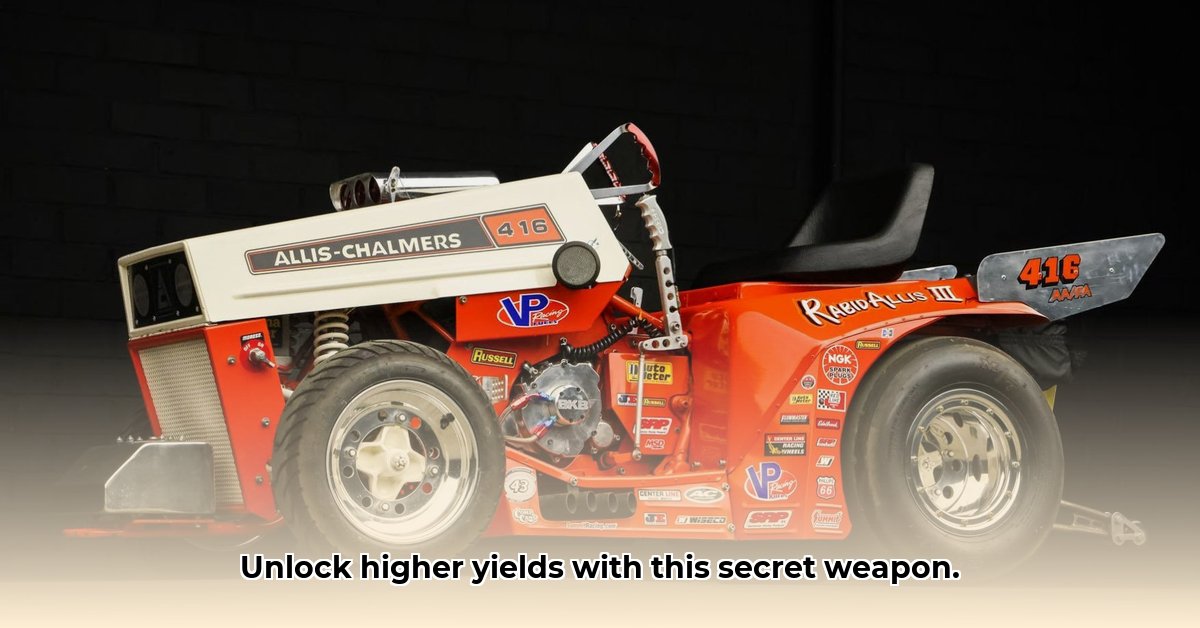
Drag Lawn Tractor: Revolutionizing Sustainable Agriculture
The agricultural world is embracing eco-friendly practices, and a surprisingly simple machine is leading the charge: the drag lawn tractor. Unlike its name might suggest, this isn't your grandfather's lawnmower. This versatile tool is transforming how farmers cultivate their land, promoting a gentler, more sustainable approach. This guide will explore its functionality, benefits, and practical application in bolstering sustainable farming practices. For more information on garden tractors, check out this helpful resource: garden tractor resources.
What is a Drag Lawn Tractor?
Forget the image of heavy tractors churning up vast fields. A drag lawn tractor employs a different strategy—reduced tillage. Instead of deeply plowing the soil, it lightly scratches the surface, a method crucial for sustainable agriculture. Picture a lightweight frame, similar in design to a heavy-duty garden cart, fitted with tines or sweeps that gently loosen the top layer of soil without extensive disruption of the underlying soil profile. This entire unit then attaches to your existing tractor. This simplicity translates to affordability and easy maintenance, making it an attractive option for farmers of all sizes.
Why Choose Reduced Tillage with a Drag Lawn Tractor?
The advantages of reduced tillage are significant, benefiting both the environment and the farmer's bottom line.
Enhanced Soil Health: By minimizing soil disturbance, you create a thriving underground ecosystem. This supports improved water absorption (reducing runoff and improving drought resilience), minimizes soil erosion, and stimulates microbial activity—all factors contributing to healthier, more fertile soil. Is it any wonder that those who choose reduced tillage often report higher yields over the long term?
Water Conservation: The improved water absorption capacity of undisturbed soil means less irrigation is needed. This is a considerable advantage in areas with water scarcity, translating to substantial cost savings and water conservation.
Fuel Efficiency: Reduced tillage requires less intense effort compared to traditional plowing methods, leading to lower fuel consumption. This translates to direct cost savings and a reduced carbon footprint—a win-win for both your wallet and the environment. Many farmers report a 20-30% reduction in fuel costs.
Carbon Sequestration: Healthy soil acts as a carbon sink, storing atmospheric CO2. Reduced tillage enhances this process, reducing the impact of climate change.
Using Your Drag Lawn Tractor: A Step-by-Step Guide
Ready to improve your soil's health? Follow these steps for optimal results:
Soil Assessment: Evaluate your soil type. Lighter soils generally respond best to reduced tillage. Heavier clay soils may require a more modified approach.
Secure Attachment: Carefully attach the drag lawn tractor to your tractor's three-point hitch, strictly adhering to the manufacturer's instructions. Safety is paramount.
Depth Adjustment: Adjust the tines' depth according to your soil and crop. Begin shallowly, gradually increasing as needed. Excessive depth negates the benefits of reduced tillage.
Consistent Operation: Maintain a steady speed during operation, slightly overlapping passes for uniform cultivation.
Post-Cultivation: Follow up with seeding or transplanting, depending on your chosen planting method.
Drag Lawn Tractors vs. Traditional Tillage: A Comparison
| Feature | Drag Lawn Tractor | Traditional Tillage |
|---|---|---|
| Soil Disturbance | Minimal, surface scratching only | Extensive, deep plowing |
| Soil Erosion | Significantly reduced | Increased |
| Water Absorption | Much improved | Reduced |
| Fuel Consumption | Lower | Higher |
| Initial Equipment Costs | Relatively low | Higher (often requires larger tractors) |
Challenges and Considerations
While the drag lawn tractor presents substantial advantages, it's not a perfect solution.
Weed Management: Increased weed pressure may require a proactive weed management strategy, potentially involving cover crops or herbicides.
Initial Investment: Although the tractor itself is relatively inexpensive, maximizing its benefits might necessitate investments in other sustainable practices (cover crops, for instance).
Learning Curve: Mastering optimal settings and techniques may require practice. However, the simplicity of the system makes it relatively easy to learn.
The Future of Drag Lawn Tractors in Sustainable Agriculture
"The drag lawn tractor has a promising role in the future of sustainable agriculture," says Dr. Emily Carter, Soil Science Professor at the University of California, Davis. "As we move towards more environmentally conscious farming practices, the demand for such low-impact equipment is only going to rise." Her research on the long-term effects of reduced tillage highlights its potential for improving soil health and reducing the environmental footprint of farming.
This low-impact farming approach is a stepping stone towards more sustainable agriculture. While effective, its success hinges on careful planning and adaptation specific to your needs.
Key Takeaways:
- Reduced tillage improves soil health, boosting yields and sustainability.
- The drag lawn tractor provides efficient reduced tillage methods.
- Careful planning and soil assessment are crucial for success.
- Gradual adoption, starting with minimal changes, is a practical approach.
- Integrating reduced tillage with cover cropping maximizes benefits.